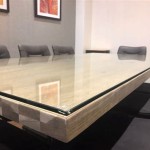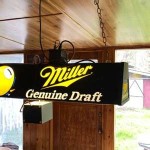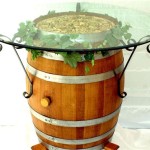Wall Doctor Graham Brown Paintable Beadboard Wallpaper: A Comprehensive Guide
Wall Doctor Graham Brown Paintable Beadboard Wallpaper offers a versatile and cost-effective solution for adding texture and visual interest to interior walls. This type of wallpaper provides the look of traditional beadboard paneling without the expense and complexity of installing actual wood panels. It's particularly attractive for those seeking a DIY home improvement project that delivers a classic aesthetic with minimal effort.
Beadboard wallpaper is typically made from a thick, textured paper or vinyl material. The raised design mimics the narrow, vertical slats characteristic of beadboard, creating a depth and dimension that flat paint alone cannot achieve. The 'paintable' aspect of this wallpaper allows homeowners to customize the color to perfectly match their existing décor or desired design scheme. This adaptability makes it a popular choice for various rooms, including bathrooms, kitchens, hallways, and even living rooms.
The application process is similar to that of traditional wallpaper, although the thicker material may require a slightly different approach. Proper surface preparation is crucial for achieving a professional-looking finish. Additionally, selecting the right adhesive and painting techniques is essential for ensuring the wallpaper adheres firmly and the paint finish is durable and aesthetically pleasing. Understanding these aspects is key to successful installation and achieving the desired aesthetic outcome with Wall Doctor Graham Brown Paintable Beadboard Wallpaper.
Understanding the Benefits of Paintable Beadboard Wallpaper
One of the primary advantages of using paintable beadboard wallpaper is its affordability compared to real wood beadboard. The cost of materials and labor for installing genuine beadboard can be significant, while wallpaper offers a fraction of the expense. This makes it an accessible option for homeowners on a budget who still want to achieve a similar look.
Furthermore, the installation process is generally simpler and faster than installing actual wood paneling. Wallpaper can be applied directly to prepared walls using standard wallpapering tools and techniques. This is particularly advantageous for DIY enthusiasts who prefer to handle home improvement projects themselves. It also minimizes disruption to the household, as the installation can often be completed in a shorter timeframe compared to wood paneling.
The paintable surface provides unparalleled customization options. Homeowners can choose any paint color to complement their existing décor or create a unique design. This flexibility allows for easy updates and changes to the room's aesthetic over time. Additionally, the textured surface of the wallpaper provides a subtle dimension that enhances the paint color and adds visual interest to the walls.
Preparing the Walls for Optimal Wallpaper Adhesion
Proper wall preparation is paramount for ensuring the successful application and longevity of paintable beadboard wallpaper. The first step involves cleaning the walls thoroughly to remove any dirt, dust, grease, or other contaminants that could interfere with adhesion. A mild detergent solution and a sponge can be used to scrub the walls, followed by a clean water rinse to remove any soap residue. Allowing the walls to dry completely is crucial before proceeding.
Any imperfections on the wall surface, such as holes, cracks, or unevenness, need to be addressed. These imperfections can create bumps or indentations in the wallpaper, compromising the overall appearance. Filling holes and cracks with spackle or drywall compound will create a smooth, even surface. Sanding the patched areas until they are flush with the surrounding wall is essential for a seamless finish.
Priming the walls with a wallpaper primer is highly recommended. Primer serves several important functions: it seals the wall surface, creating a uniform base for the wallpaper adhesive; it improves adhesion, ensuring the wallpaper adheres firmly to the wall; and it prevents the wall from absorbing too much adhesive, which can lead to bubbles or peeling. A high-quality wallpaper primer specifically designed for wallpaper application is recommended for optimal results.
Applying the Beadboard Wallpaper with Precision and Care
The application process for paintable beadboard wallpaper largely mirrors that of traditional wallpaper, but the thicker material demands careful attention to detail. Accurate measurements are critical for ensuring that the wallpaper panels align properly and minimize waste. Measuring the height and width of each wall section and adding a few inches for trimming is advisable. It is vital to plan the layout, considering any patterns or seams, to achieve a visually appealing result.
Selecting the appropriate wallpaper adhesive is essential for ensuring a strong and lasting bond. Pre-pasted wallpaper requires wetting the back of the paper to activate the adhesive, while non-pasted wallpaper requires applying adhesive directly to the wall or the back of the paper. For heavier, textured wallpapers like beadboard, a heavy-duty wallpaper paste is recommended. Evenly applying the adhesive according to the manufacturer's instructions is essential to avoid air pockets or uneven adhesion.
Carefully aligning the wallpaper panels is crucial for achieving a seamless and professional-looking finish. Using a plumb bob or a level to ensure that the first panel is perfectly vertical is important. Overlapping the edges of the panels slightly or butting them together tightly, depending on the manufacturer's recommendations, will minimize visible seams. Smoothing out any bubbles or wrinkles as you go using a wallpaper smoothing tool will ensure that the wallpaper adheres firmly to the wall.
Trimming the excess wallpaper along the top and bottom edges with a sharp utility knife will create a clean and finished look. Using a metal straightedge as a guide will help to ensure a straight and even cut. Wiping away any excess adhesive with a damp sponge will prevent it from drying on the wallpaper surface and potentially interfering with the paint finish. Taking the time to perform these steps with precision will result in a professionally installed beadboard wallpaper.
Painting the Beadboard Wallpaper to Achieve the Desired Aesthetic
Selecting the appropriate paint type for paintable beadboard wallpaper is crucial for achieving a durable and aesthetically pleasing finish. A high-quality latex paint is generally recommended for its durability, ease of application, and wide range of color options. Eggshell or satin finishes are popular choices for their subtle sheen and ability to hide imperfections. Avoid using flat paint, as it can be difficult to clean and may show scuffs and marks more easily.
Prior to painting, priming the wallpaper with a primer designed for paintable surfaces is recommended. This will help to create a uniform base for the paint and improve adhesion. Allowing the primer to dry completely according to the manufacturer's instructions is crucial before proceeding to painting. In some cases, especially with very dark or vibrant desired colors, multiple coats of primer may be needed to prevent bleed-through and ensure a true and even final color.
Applying the paint in thin, even coats is essential for achieving a smooth and professional-looking finish. Using a high-quality brush or roller that is appropriate for the paint type will help to minimize brush strokes or roller marks. Working in small sections and overlapping each stroke slightly will ensure uniform coverage. Allowing each coat of paint to dry completely before applying the next will prevent drips and runs and create a more durable finish. Applying two or three coats of paint will typically provide the best coverage and durability.
Paying attention to the details, such as cutting in along the edges and corners with a brush, will create a clean and finished look. Wiping away any drips or splatters as you go will prevent them from drying on the wallpaper surface. Allowing the paint to cure completely according to the manufacturer's instructions before exposing the wallpaper to moisture or abrasion will ensure the durability of the finish. With careful attention to these details, painting the beadboard wallpaper can transform the space and create a beautiful and lasting effect.

Graham Brown Eclectic 56 Sq Ft White Vinyl Paintable Textured Beadboard Prepasted Soak And Hang Wallpaper In The Department At Com

Paintable Beadboard Wallpaper

Graham Brown Wall Doctor Gb 17267 Beadboad Effect

Graham Brown Heavy Duty Textured Wallpaper 1 Roll Wall Doctor Pre Pasted New

Graham Brown Paintable Prepasted Beadboard Stripes Texture Wallpaper White For

Graham Brown Paintable Prepasted Beadboard Stripes Texture Wallpaper White For

How To Easily Hang Wallpaper With Graham Brown S Paste The Wall Beadboard Paneling Diy

Installing Beadboard Wallpaper Southern Hospitality

Graham Brown White Vinyl Pre Pasted Moisture Resistant Wallpaper Roll Covers 56 Sq Ft 15274 The Home Depot

Graham Brown Eclectic 56 Sq Ft White Vinyl Paintable Textured Beadboard Prepasted Soak And Hang Wallpaper In The Department At Com








